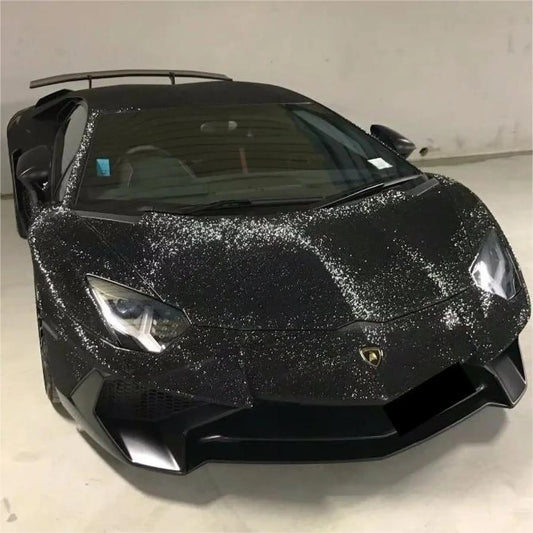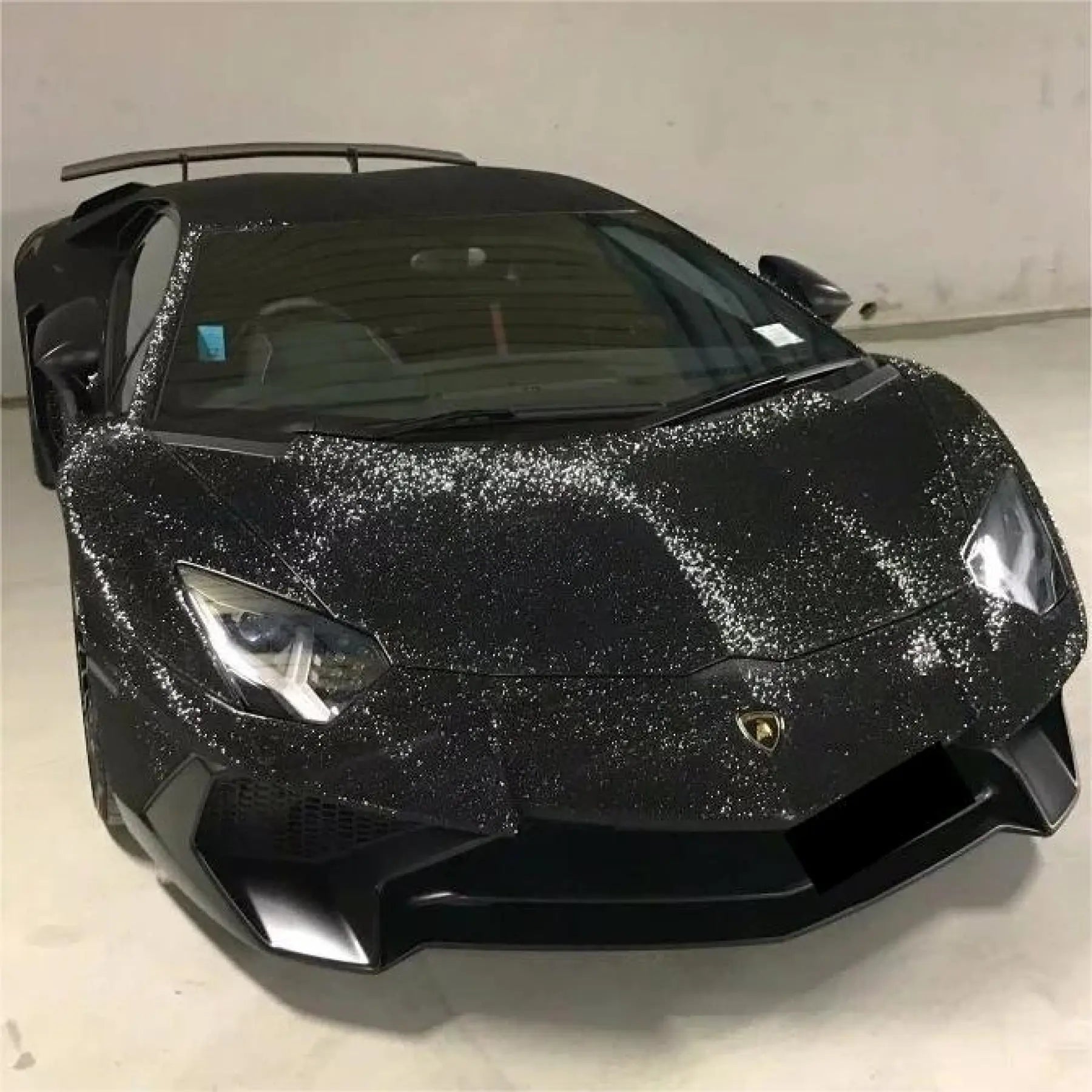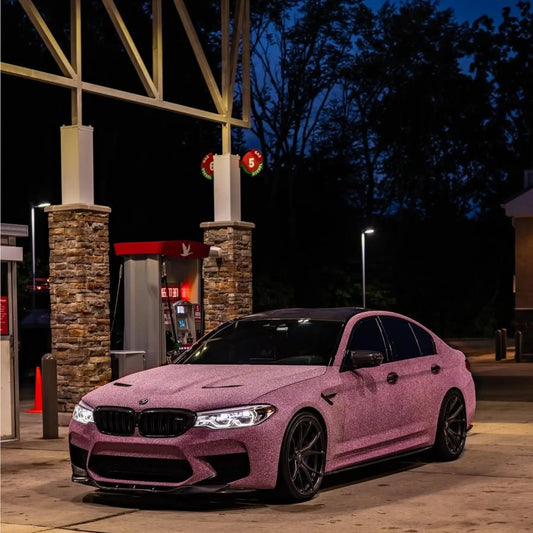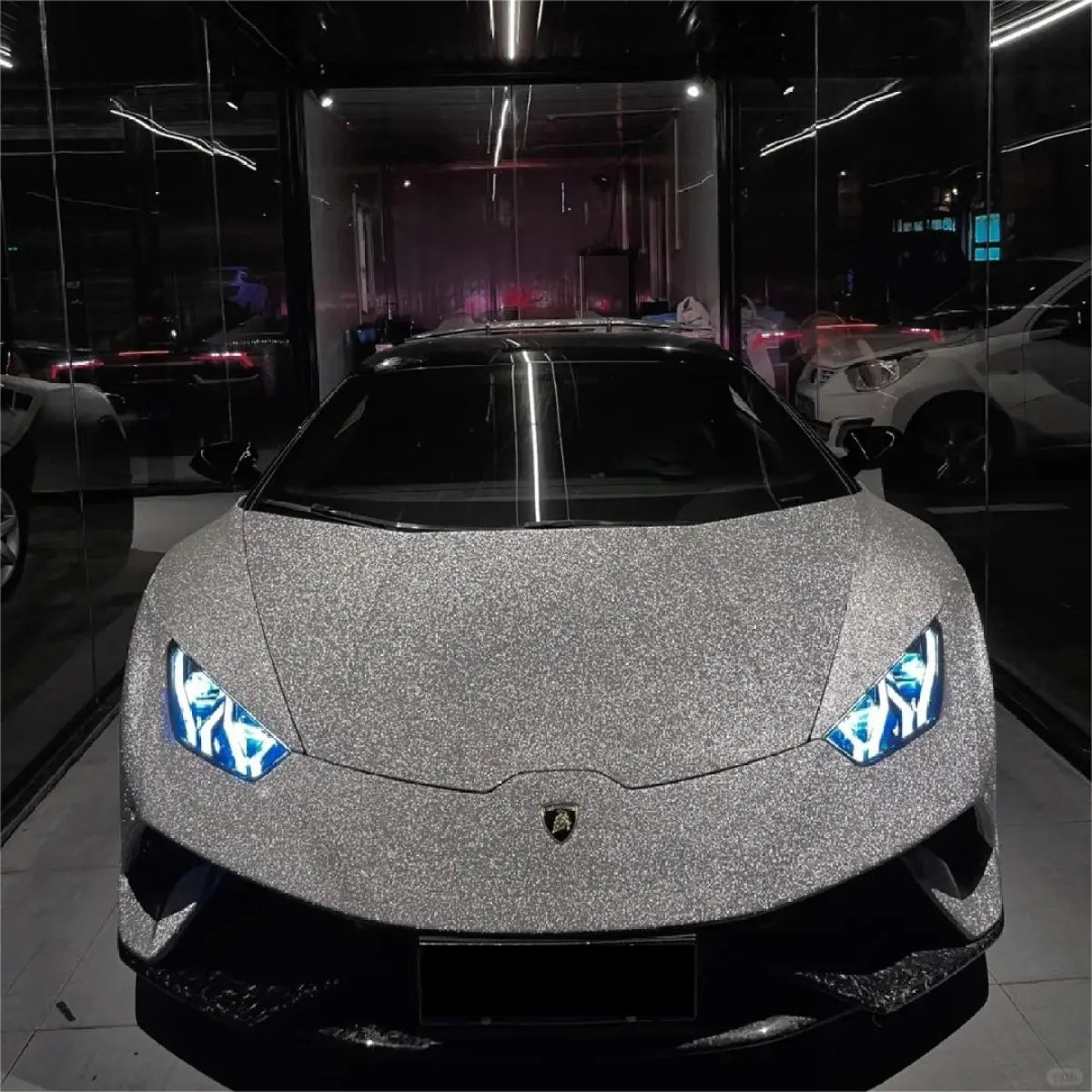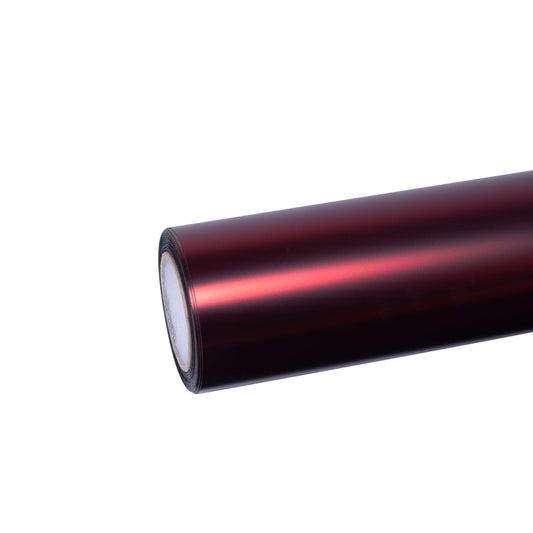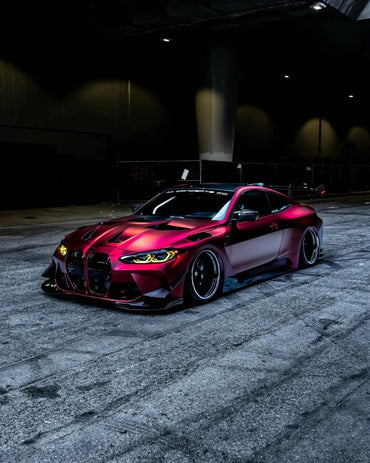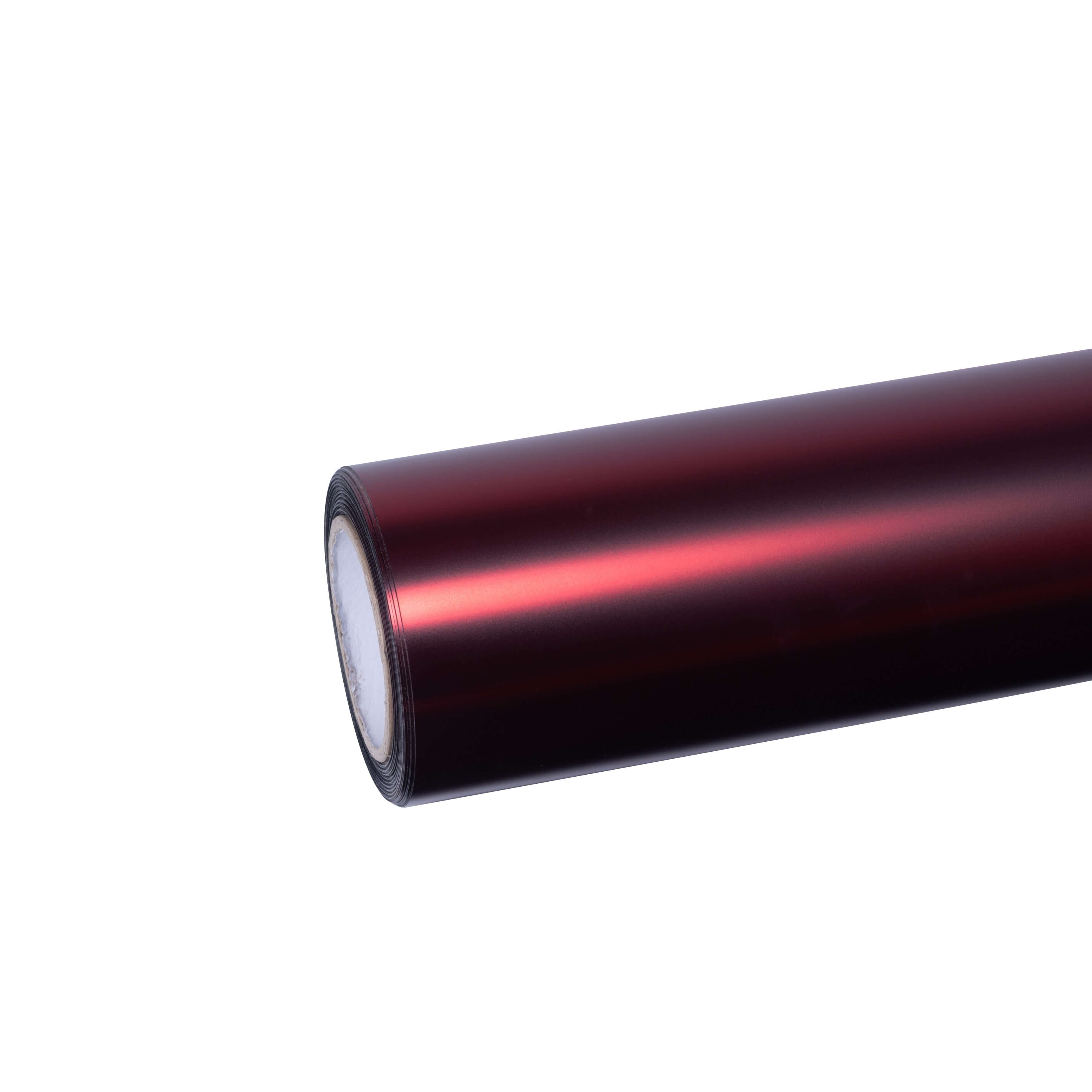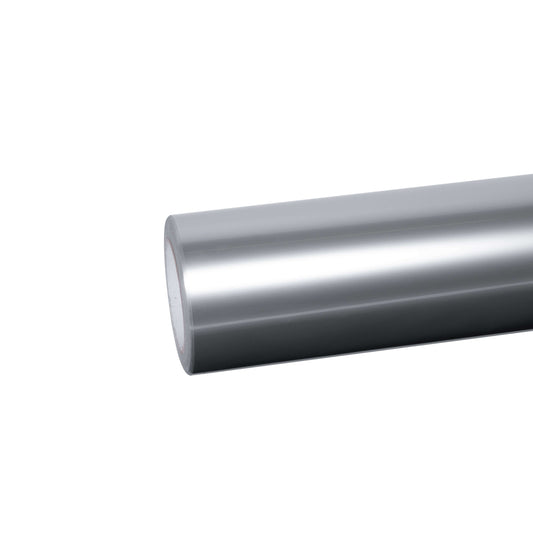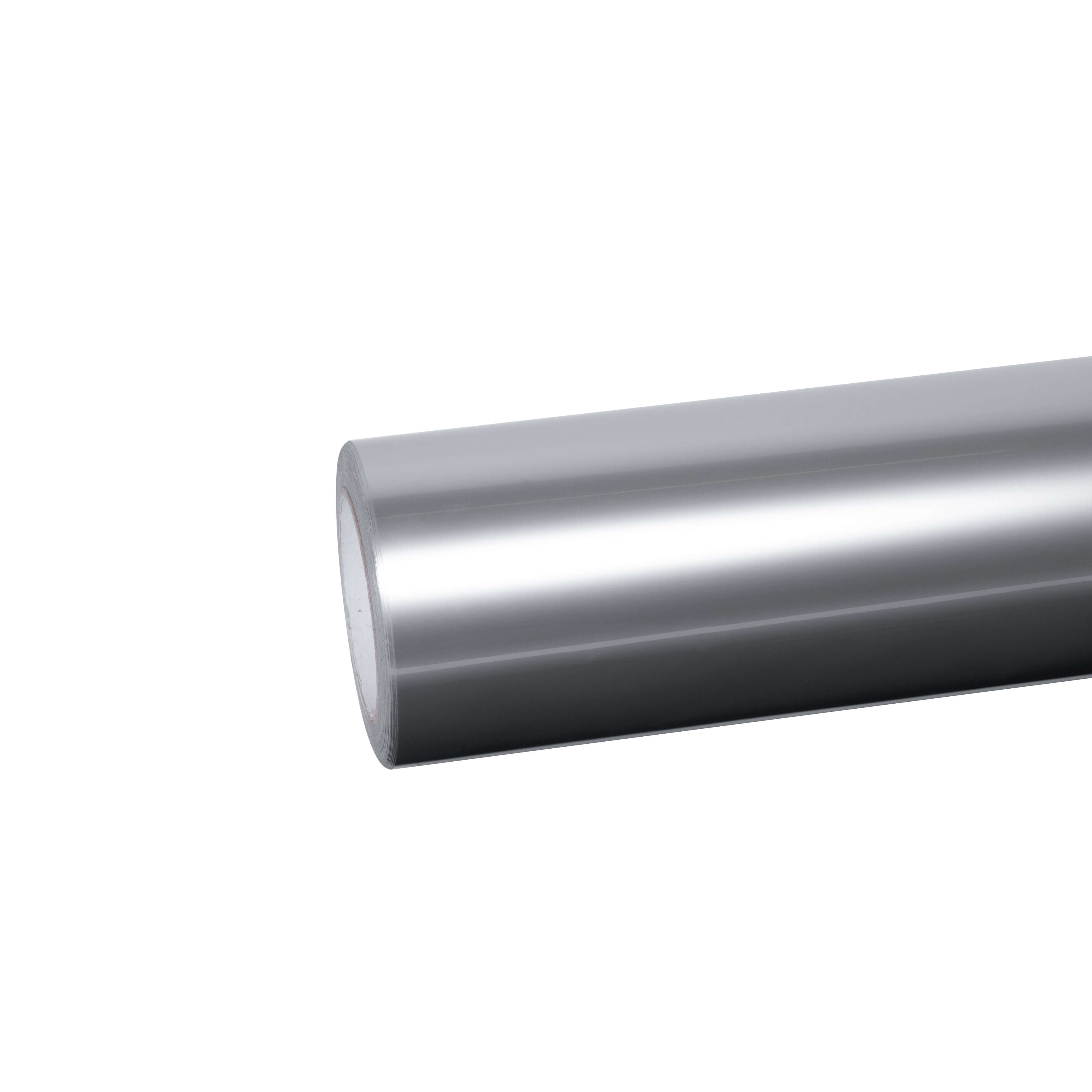Paint protection film, commonly known as PPF, has emerged as the gold standard for defending vehicles against road debris damage. This advanced thermoplastic polyurethane technology creates an invisible shield that absorbs impacts, prevents scratches, and maintains your car's showroom appearance for years to come.
Understanding Rock Chip Damage: The Hidden Threat to Your Paint
Rock chips might appear insignificant at first glance, but these small blemishes pose serious long-term risks to your vehicle's exterior. When debris strikes unprotected paint at highway speeds, the impact penetrates through multiple layers of your car's finish.
Your vehicle's paint consists of several vulnerable layers: the clear coat provides gloss and initial UV protection, the base coat delivers color and depth, and the primer helps paint adhere while preventing corrosion. Each layer serves a critical protective function, yet all remain susceptible to road hazards.
Road debris including gravel, small stones, and salt used for winter road maintenance can cause immediate damage to paint surfaces, creating entry points for rust formation that compromise your vehicle's structural integrity and resale value. Beyond aesthetic concerns, exposed metal oxidizes rapidly when moisture penetrates damaged areas, particularly in wet climates or regions using road salt during winter months.
How Paint Protection Film Technology Works
Paint protection film consists of multiple specialized layers working together: a clear coat top layer with self-healing properties, a middle polyurethane layer that's flexible and durable for absorbing impacts, an adhesive layer ensuring secure bonding without damaging paint, and UV protection shielding against sun-induced fading.
Modern PPF technology represents decades of materials science advancement. High-quality films feature top layers made from elastomeric polymers, which remain resilient and recover their original shape after being bent or stretched. This molecular structure allows the film to disperse impact energy across its surface rather than allowing force to penetrate to the paint beneath.
The TPU paint protection wrap available from Sailifilm utilizes advanced thermoplastic polyurethane formulations specifically engineered for maximum impact resistance. Unlike older PVC-based films that yellowed and cracked over time, contemporary TPU materials maintain optical clarity and structural integrity throughout their lifespan.
The Self-Healing Revolution in PPF
One of PPF's biggest advantages is its self-healing capability, where different film layers can successfully repair surface-level damage, and the self-healing paint protection becomes effective when exposed to high temperatures. This remarkable property means minor scratches and swirl marks literally disappear when exposed to heat from sunlight or warm water washing.
The self-healing mechanism operates at the molecular level. When the film's surface sustains light scratches, heat energy allows the polyurethane chains to relax and flow back together, closing the damage. The film will self-heal minor to moderate rock chips as long as the impact does not penetrate the PPF, ensuring your vehicle maintains a flawless appearance even after years of daily driving.
This technology proves particularly valuable for vehicles exposed to automatic car washes, where brushes and contact washing methods often create fine surface scratches on unprotected paint. With quality PPF installed, these minor abrasions heal themselves, eliminating the need for frequent polishing and paint correction.
Protection Beyond Rock Chips
While rock chip prevention represents PPF's primary function, the benefits extend far beyond road debris protection. PPF protects vehicles from harmful pollutants including sand, salt, acidic bird droppings, and acid rain, allowing automobiles to preserve their appearance for longer periods .
Environmental contaminants pose constant threats to automotive finishes. Tree sap contains acids that etch into clear coats, bird droppings have highly acidic pH levels that permanently stain paint, and industrial fallout settles on horizontal surfaces causing microscopic pitting. Paint protection film creates an impermeable barrier preventing these substances from reaching your vehicle's paint.
The colored paint protection film collections from Sailifilm offer an innovative solution for drivers seeking both protection and aesthetic enhancement. These advanced films combine PPF's protective capabilities with vibrant color options, allowing complete vehicle transformations while maintaining superior defense against environmental damage.
Real-World Rock Chip Protection Performance
When a rock hits a car protected with PPF, the film takes the force of the impact, preventing the chip from reaching the paint underneath by absorbing and deflecting the impact of rocks and other debris. This sacrificial layer principle means the film sustains damage instead of your expensive paint job.
PPF will stop approximately 99% of things that hit vehicles during daily use, though rocks large enough, fast enough, and sharp enough to dent metal can potentially penetrate film. However, even in extreme impact scenarios where film is breached, there will simply be a small tear in the PPF where the rock made impact, with the PPF continuing to protect most of the paint even with severe tears.
The replaceable nature of PPF represents another significant advantage. If PPF gets damaged, in many cases the damaged area can be repaired rather than replacing the whole piece, with installers able to seam in new pieces along body lines where seams remain barely noticeable. This modular approach means localized damage doesn't necessitate complete reinstallation, reducing long-term maintenance costs.
Coverage Areas for Maximum Protection
Strategic PPF installation focuses on high-impact zones most vulnerable to road debris. Front bumpers absorb the majority of rock strikes, making this the single most critical protection area. Hood surfaces face constant bombardment from debris kicked up by vehicles ahead, while front fenders and side mirrors in the forward airflow path regularly encounter flying gravel.
Full-front coverage packages protect all vulnerable forward-facing surfaces, offering comprehensive defense during highway driving. Many vehicle owners extend protection to door edges, rocker panels, and rear fender areas behind wheel wells, where tires launch debris against body panels.
For ultimate peace of mind, full-vehicle PPF installation provides complete paint protection. While representing a larger investment, this approach eliminates all rock chip concerns and maximizes resale value preservation. The best sellers collection at Sailifilm features popular protection packages designed for common coverage requirements.
PPF Durability and Longevity
The actual lifespan of PPF ranges between five and seven years, though premium films can last considerably longer with proper care. Modern TPU-based films resist the yellowing and degradation that plagued earlier generation products, maintaining optical clarity throughout their service life.
Quality PPF installations require minimal maintenance beyond regular washing. The hydrophobic properties of advanced films cause water to bead and sheet off surfaces, making cleaning easier while preventing water spot formation. Most manufacturers recommend gentle hand washing or touchless car washes to maximize film lifespan, though high-quality PPF withstands brush-style automatic washes without issue.
The ultra matte wrap collection demonstrates PPF technology's aesthetic versatility. These specialized films deliver sophisticated matte finishes while retaining full protective capabilities, proving protection doesn't require compromising on style.
The Science Behind Impact Absorption
Understanding how PPF prevents rock chip damage requires examining the physics of material science. PPF provides a sacrificial layer between the vehicle's paint and external elements, with the film designed to absorb the impact of small debris by dispersing energy across its surface.
Thermoplastic polyurethane's molecular structure allows controlled elastic deformation under impact. When debris strikes the film, the material flexes and stretches slightly, converting kinetic energy into heat rather than allowing it to transfer directly to the paint surface. This energy dissipation mechanism explains why PPF so effectively prevents damage that would otherwise chip brittle paint layers.
Film thickness plays a crucial role in protective performance. PPF is at least four times as thick as the clear coat on paint, providing substantially more material to absorb and distribute impact forces. This thickness advantage, combined with superior flexibility compared to automotive clear coats, explains PPF's remarkable effectiveness against road debris.
Colored PPF: Protection Meets Personalization
The evolution of paint protection film technology has produced innovative solutions combining defense with customization. Colored PPF represents the convergence of protective functionality and aesthetic transformation, allowing vehicle owners to simultaneously safeguard their paint and achieve dramatic appearance changes.
Sailifilm's rainbow laser vinyl wrap and glitter sparkle car wrap collections showcase cutting-edge PPF applications where protection meets creative expression. These specialized films maintain TPU's self-healing properties and impact resistance while delivering eye-catching visual effects impossible to achieve with traditional paint.
The liquid chrome wrap and metallic vinyl wrap offerings demonstrate PPF technology's incredible versatility. Vehicle owners no longer face the choice between protection and personalization – modern colored PPF delivers both simultaneously.
Installation Considerations and Best Practices
Professional PPF installation requires specialized skills, tools, and controlled environments. Proper surface preparation proves critical for optimal adhesion and longevity. Installers meticulously clean and decontaminate paint surfaces, removing all traces of wax, oils, and embedded contaminants that could compromise film bonding.
Pre-cut patterns designed for specific vehicle makes and models ensure precise fit and minimize visible seams. Computer-aided design technology creates templates matching exact body panel dimensions, allowing installers to apply film with minimal trimming on the vehicle. This approach reduces installation time while producing cleaner, more professional results.
The wrapping tools collection from Sailifilm provides professional-grade equipment essential for achieving flawless installations. Quality tools including squeegees, heat guns, and application fluids enable precise film positioning and activation of adhesive systems.
PPF vs. Traditional Protection Methods
Comparing paint protection film to alternative solutions highlights PPF's superior performance. Traditional clear bras, constructed from thick vinyl materials, offered early paint protection but obscured vehicle aesthetics with visible edges and yellowing over time. Modern PPF's optical clarity eliminates these aesthetic compromises.
Ceramic coatings provide excellent hydrophobic properties and chemical resistance but offer minimal impact protection. While ceramic coatings shield against environmental contaminants and enhance gloss, they cannot prevent rock chip damage. Many vehicle owners combine ceramic coatings over PPF for maximum protection and ease of maintenance.
Touch-up paint represents reactive damage control rather than proactive prevention. Touch-up paint is only used after damage has occurred, while PPF is proactive, stopping damage before it starts. Investing in quality PPF eliminates the need for repeated paint repairs while preserving factory finish integrity.
Cost Analysis: PPF as a Long-Term Investment
By investing in paint protection film, vehicle owners preserve their car's appearance while saving money on costly repairs down the line. The upfront cost of PPF installation must be weighed against the cumulative expense of paint repairs, reduced resale value, and diminished vehicle appearance over time.
Professional paint correction and rock chip repair services typically charge $50-150 per panel, with costs escalating rapidly for extensive damage. A single front bumper respray can exceed $800-1,500 at quality body shops, while full-vehicle paint jobs require $5,000-15,000 depending on vehicle size and paint quality.
PPF installation costs vary based on coverage area and vehicle complexity, but the investment protects against damage totaling thousands of dollars over a vehicle's ownership period. The protection becomes particularly valuable for leased vehicles, where excess wear charges at lease end can prove expensive, and for luxury vehicles where maintaining pristine condition directly impacts resale value.
Maintenance and Care for Protected Vehicles
Properly maintained PPF delivers years of reliable protection with minimal effort. Regular washing removes surface contaminants before they can bond to the film, while periodic inspection identifies any damage requiring attention. Most quality PPF requires only standard car care practices to maintain optimal appearance and performance.
Avoid petroleum-based products and harsh chemicals that can degrade film adhesives or compromise self-healing properties. Use pH-neutral car wash solutions and microfiber towels to prevent scratching during cleaning. The hydrophobic nature of quality PPF means dirt and grime rinse away easily, requiring less aggressive cleaning methods than unprotected paint.
For colored and specialty films like dual color dream vinyl wrap or 3D carbon fiber wrap options, follow manufacturer care recommendations to preserve unique finishes. These advanced materials maintain their distinctive appearances for years when properly maintained.
The Future of Paint Protection Technology
Paint protection film technology continues evolving with advancements in materials science and manufacturing processes. Next-generation PPF incorporates enhanced self-healing formulations that repair larger scratches and deeper impacts. Improved UV inhibitors extend film lifespan while preventing any hint of yellowing even in extreme sun exposure.
Nanotechnology integration promises even better hydrophobic properties and stain resistance. Some manufacturers are developing films with antimicrobial properties that prevent biological growth and easier cleaning. These innovations ensure PPF remains the premier choice for vehicle paint protection.
The crystal vinyl wrap collection represents Sailifilm's commitment to cutting-edge protection technology. These premium films showcase the latest advances in clarity, protection, and aesthetic appeal.
Making the PPF Decision: Is It Right for You?
Several factors determine whether paint protection film represents the right choice for your vehicle. New vehicle owners gain maximum benefit from PPF installation, protecting factory paint from its first exposure to road hazards. The pristine surface beneath fresh PPF ensures optimal adhesion and appearance.
Vehicles subjected to frequent highway driving face elevated rock chip risk, making PPF particularly valuable. Similarly, cars in harsh climates with snow, salt, or intense sun exposure benefit significantly from PPF's comprehensive environmental protection.
Luxury, exotic, and collector vehicles represent prime PPF candidates due to expensive paint replacement costs and the importance of maintaining pristine condition. Even mainstream vehicles gain value from PPF when factoring in improved resale value and reduced maintenance expenses over ownership.
Consider starting with sample kits from Sailifilm to experience film quality and appearance before committing to full installation. These samples allow hands-on evaluation of different finishes and protection levels.
Conclusion: Invisible Armor for Your Investment
Rock chip damage remains an inevitable consequence of vehicle operation, but paint protection film transforms this certainty into a manageable concern. By creating an advanced protective barrier that absorbs impacts, heals minor damage, and shields against environmental contaminants, PPF preserves your vehicle's appearance and value for years beyond what unprotected paint can achieve.
The technology delivers measurable results: fewer paint chips, reduced maintenance costs, enhanced resale value, and peace of mind during every drive. Whether protecting a daily commuter or preserving a weekend sports car, PPF represents one of the smartest investments any vehicle owner can make.
Explore the complete range of protective solutions at Sailifilm.com, where premium TPU paint protection films meet innovative style options. Protect your investment today and drive with confidence tomorrow.
External Resources:
- Learn more about paint protection film technology on Wikipedia
- Understand automotive paint systems and protection methods


